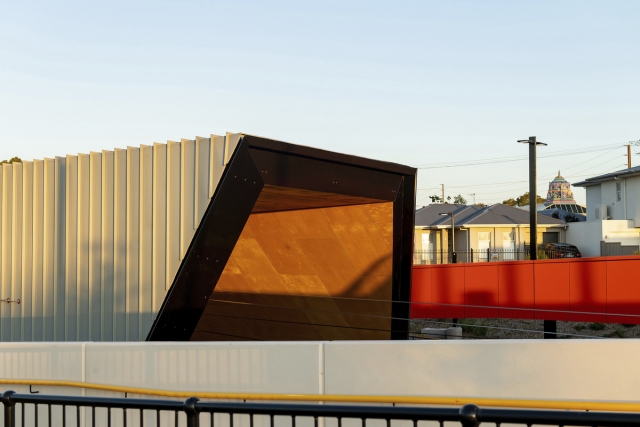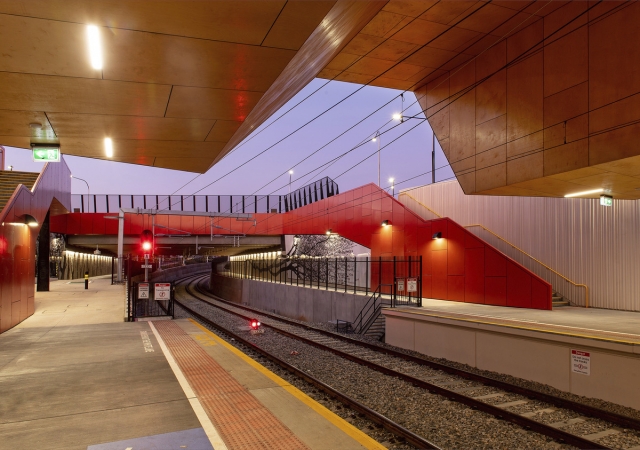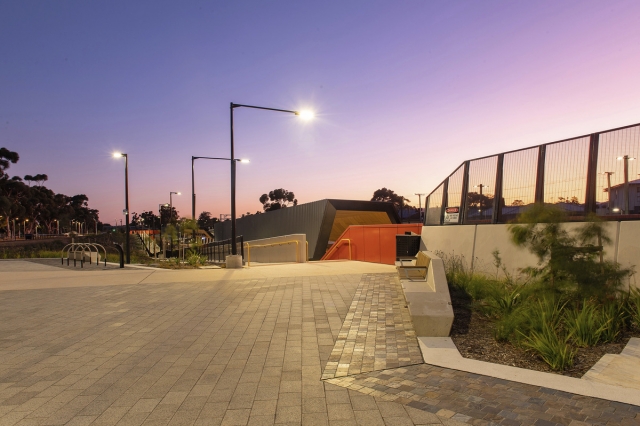Adelaide is the capital city of South Australia.
Despite being a modern city in many respects, its transport network includes a number of undesirable road/rail level crossings.
Road traffic at these level crossings is managed by boom gates that give priority to trains, interrupting the flow of road traffic and contributing to congestion and delays on Adelaide’s roads.
That comes at a big economic cost, and as Adelaide’s train network is modernised, longer and more frequent trains are planned, thereby increasing delays for road users.
Then there’s the appalling safety record of level crossings.
Level crossings introduce a dangerous ‘conflict point’ between rail and road traffic.
Incidents at level crossings, including collisions and signal faults, impact the efficiency and reliability of Adelaide’s transport network.
And cost lives.
That’s why the South Australian Government has committed to removing several level crossings including those at Hove, Ovingham, and Oaklands.
The Oakland Station level crossing removal project was approved for delivery though the PTP Alliance that brings McConnell Dowell, Arup, Mott Macdonald, and the Department of Planning, Transport and Infrastructure together.
Completed in 2019, the Oaklands Crossing Grade Separation project delivered an enhanced station precinct, improved pedestrian and bicycle connectivity, and better facilities.
The project supported local and state government aims to increase public transport patronage, improve amenity, reduce travel time delay, and boost safety.
COX Architecture and ASPECT Studios worked jointly on the urban design elements of the Oaklands Crossing Grade Separation project with each focusing and documenting the architecture and landscape elements respectively.
The distinctive Oaklands Station canopy is a high-performance piece of public infrastructure with a strong identity and presence at both the lowered corridor level and at-grade.
The station canopy rises and cantilevers towards the Morphett Road plaza, creating a strong gesture and boldly announcing itself to the main node of activity.
The expressive roof form responds to the safety requirements of an active rail line; its eight-metre cantilever provides shelter and a striking local landmark.
The distinctive cross-section is extruded across the platform length with a central diagonal cut out which serves to both focus the infrastructure over the most required areas as well as open views in and out of the station.
Complementary to the premium station requirements, the public realm and surrounding landscape area features extensive planting, high quality paved areas, public art, urban furniture, and strong pathway and cycling connections.
Supplementing these material choices and bringing a touch of natural warmth, the canopy soffit is lined with epoxy treated plywood panels set in a stretcher bond pattern.
The station has been designed by the COX Architecture team to be low maintenance, without compromising aesthetics or amenity.
Material and design choices such as textured paint finished concrete panels and steel plate cladding limit graffiti opportunities and facilitate its removal.
Integrated public art supports this aim by discouraging vandalism as well as creating pride and interest.
Local artists Jess Loughlin and Rachel Harris (project-2-project) created a piece which reflects the history of the City of Marion, as well as highlights the strong connections between the people of the area and the surrounding landscape.
The COX Architecture and ASPECT Studios design teams worked within a highly collaborative environment.
All engineering disciplines were fully integrated and worked together to balance the core technical, operational, and safety requirements of the project brief with desirable public space, passenger amenity, and community outcomes.
The PTP Alliance established a rail interface group that met at the Department of Planning, Transport and Infrastructure weekly to discuss interfaces between operations and design.
Excellent working relationships developed and consolidated within the group.
When the station was handed over, the Alliance congratulated COX Architecture and Aspect Studios for the well-executed balance between the core technical requirements and the passenger experience and access.
The project was successfully delivered on time, on budget and with minimal community, rail, and traffic disruption.
Sustainability objectives were also met, including:
- Pedestrian and cycle paths were upgraded to encourage walking, cycling, and the use of public transport in a previously vehicle focused precinct.
- Material choices were made with longevity in mind.
- The collaborative nature of the project between the design and construction teams maximised efficiency in construction whilst minimising waste and delay.
- Vegetation choices reflected the flora and micro-climate of the area.
Bottom line?
The Oaklands Station project designed by COX Architecture and Aspect Studios delivers a striking and lasting response to its main three facets; technical and operational requirements, public amenity and connectivity, and design excellence.
Project Details
Completion date – 2019
Project Team
Architecture
Cox Architecture
COX is a design-focused contemporary architectural practice with studios located in every major Australian city and a history spanning 60 years. Key to their ethos is supporting the public life of our cities. Cox does this by ensuring each project makes positive contributions to its public realm – giving more than it takes.
Landscape Architecture
ASPECT Studios
ASPECT Studios is an internationally awarded design firm of innovative, brave city-shaping leaders.
Photography
Iain Bond
Iain is a commercial and architectural photographer working in South Australia.
Further Resources
There are a raft of detailed project resources on the PTA Alliance website, including time-lapse construction videos like this, this, and this.
Photo Gallery
Click on a thumbnail image to enlarge.
Design © 2020 Cox Architecture and ASPECT Studios. All Rights Reserved.| Images © 2020 Iain Bond. All Rights Reserved.
Get the Builtworks Letter
In every edition of the Builtworks Letter, you’ll get the behind-the-scenes backstory as to how buildings are designed, built, and brought to life.
You’ll hear compelling stories, learn surprising ideas, meet engaging characters, and discover unique voices.






